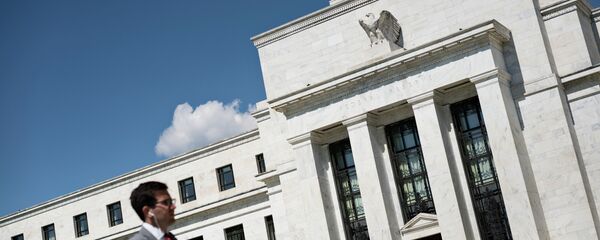The subdued pace of growth in salaries suggests the wage stagnation is still a major issue to the broader economy seven years into the post-Great Recession recovery. Even though the official figures for the labor market look encouraging, the low unemployment is failing to translate into substantially higher worker compensations.
US costs of labor, or the Employment Cost Index, advanced 0.6pc in 3Q13 quarter-on-quarter, matching a similar gain during the previous three months, whilst wage inflation rose 0.5pc. On a year-on-year basis, the ECI rose 2.3pc, according to a Labor Department report released on Friday. The figures fell in line with earlier predictions, and the pace of gains has been unchanged for the three past quarters.
“Although the recent numbers are not very strong,” the data “supports our view that a tighter labor market is putting some upward pressure on wages,” Daniel Silver of JP Morgan Chase wrote.
According to the Federal Reserve’s Beige Book, released earlier this week, there is evidence of higher upward pressure on wages cause by the shortage of available labor in some parts of the country across several sectors of the economy. However, another measure, the Fed’s Labor Market Conditions Index (LMCI), has demonstrated downward dynamics throughout the year, suggesting a fair amount of uncertainty and turmoil in the job market.
“We have seen an increase in wage pressures in the restaurant business for hourly positions and managers,” Greg Levin of BJ’s Restaurants Inc. said. “I expect to see additional upward pressure on hourly and management wages going into 2017.”
Salaries and wages advanced 2.4pc year-on-year in Q3, compared to a 2.9pc advance in the GDP for the same period. Costs of employment in the public sector have gained quicker than in the private sector, suggesting the private sector employers are struggling with broader economic anxiety being unable to increase worker compensation at a price of their own competitiveness in the market. Public sector wages rose 0.9pc quarter-on-quarter, and 2.6pc year-on-year, whilst the respective numbers for the private sector were 0.5pc and 2.3pc.
When a broader economy outpaces gains in wages in the absence of any substantial inflation, productivity might be a concern.
The Fed’s ultra-loose monetary policies have helped disguise the problem of low productivity with money injections into the economy, but a structural reform is needed to eradicate the matter. Should the low productivity persist, natural interest rates, and the Fed’s borrowing costs will be bound at near-zero.
According to data by the Federal Reserve Bank of St. Louis, labor productivity had advanced by a yearly average of 2.34pc between Q1 1990 and Q4 2010, and ever since has been gaining just an average 0.34pc per year.
“I think we have seen some modest pickup in wage growth. It’s running a little higher than it was over the last two years by a number of important measures,” Fed Chair Janet Yellen said last month. “My hope and expectation is that we will see some further pickup in wage growth, and that it will be broadly beneficial to American households.”
Household incomes, meanwhile, albeit gained 5.2pc in 2015, the highest pace of gains since 2007, are still below their pre-recession levels. Amidst the booming household indebtedness, the low disposable incomes render inflation expectations subdued, and growth prospects dim. The Fed is likely to stand pat on rates in November, and hardly attempt to raise borrowing costs in December, although that and subsequent choices will largely be viewed as an indirect consequence of the upcoming elections.





